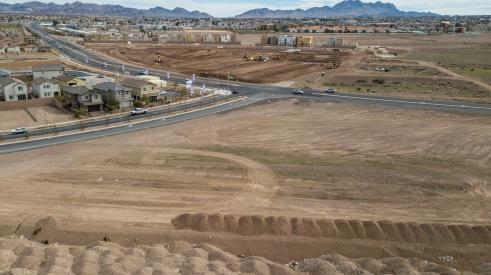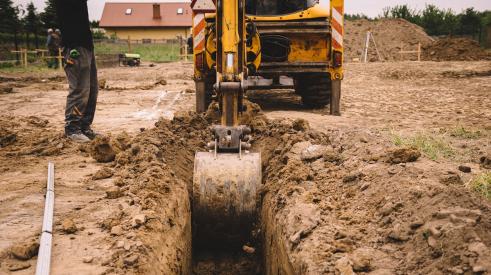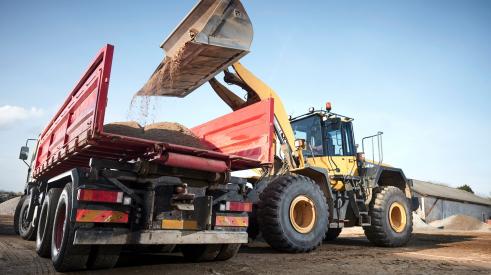|
As you enter the lower 9th Ward of New Orleans, the smell hits you right away — the sick smell of death. Spend a few seconds inside one of these empty, desolate homes, filled with rotting couches, walls consumed by mold — and the smell will turn your stomach. A breeze carries a shard of aluminum flashing into the street. It clangs, then skids to a stop beneath a heap of downed electrical wires.
Months after Hurricanes Katrina and Rita tore through this region, few residents have come home. Home to what? For those who live outside less damaged areas, such as French Quarter, or St. Tammany Parish, the cavalry still hasn't come. Now, given the election-year fiscal caution taking place in Washington, it may never come. Those early stories about the exciting prospects of rebuilding the region have begun to seem like a cruel joke.
At this writing, thousands of home sites in the hardest hit parishes — Jefferson and St. Bernard, for example — have no water, no electricity and few occupants. On some exteriors, you can clearly see the flood line, the point where the putrid brackish water finally stopped rising. Red spray paint scrawled across the doorways of home after home tells the story in a way that words cannot. That's the color coding system used by the city to identify a home no longer suitable for human habitation.
"Even a red tag doesn't necessarily mean the house must be demolished," notes Mike Centineo, the director of permitting for New Orleans. "It depends on what people are willing to do to make their home livable again."
Centineo should know. He lost his own house to Katrina and has been living for months in a tiny cabin aboard a cruise ship in the Gulf. He treks to City Hall every day, past the National Guard troops still lingering in the courtyard, and does his best to put things right.
"We've got thousands of houses built in the 1950s, '60s and '70s that won't be practical to elevate," Centineo says. "People are going to have to rebuild. But right now, nobody has been given a clear picture of what the levee situation is going to be."
That "not knowing" is fueling rumors and potential scams. Signs offering to buy houses with cash are often nailed to fences and doorways. "Somebody sent around some fright e-mails, saying that the government was going to bulldoze their neighborhoods" Centineo says, "then all of a sudden those signs popped up."
Some estimates now put the region's total loss at more than 100,000 homes. Most of these properties are simply rotting away in limbo, as the region languishes on a knife's edge between hope and despair.
Who's holding the knife? Bureaucrats and politicians. The key players: Louisiana legislators, insurance companies, FEMA — and the U.S. Congress.
Lawmakers in Louisiana have proposed a statewide adoption of the International Residential Code. But the Louisiana Home Builders Association says that move would amount to the kiss of death for housing affordability.
"Even now, you just can't produce product that's affordable, especially in New Orleans," says Ronnie Kyle, president of the LHBA, as he watches a group of workers pour a cement pool on the back of a large custom home in the Country Club of Louisiana in Baton Rouge. "They are probably going to adopt new codes requiring 120 to 130 mph wind resistance. That can cause an 18 percent bump in the material and labor costs alone."
And those kinds of obstacles, says Kyle, have given a lot of regional builders second thoughts about moving into the New Orleans market — including himself.
"I'm only 70 miles away," Kyle says, "I've got the skilled crews, the knowledge and an understanding of the local culture, and I'm not going down there. It's just too much of a headache."
He turns to Carlos Alvarez, a local production builder who has just walked onto the site. "Hey Carlos, are you going to build in New Orleans?"
"Not me," says Alvarez. "I'm having enough trouble getting labor up here. I'm calling Houston today to try to get an electrician. I have three electricians who work for me here, but they take weeks to do one house.
"FEMA's paying guys in New Orleans $24 an hour," he adds. "Plus, they feed them and give them an allowance for fuel every week. I can't compete with that."
Which brings us to another major rebuilding challenge — finding people to do the work.
You can spend half the day driving around New Orleans neighborhoods and see maybe a half-dozen active construction crews — most of them roofers. Almost no one is breaking new ground. That's because many small builders are still playing catch-up.
"Right now we're not even building," says Phil Hoffman, owner of Hoffman Custom Built Homes in La Place, La. and president of the New Orleans Area Home Builders Association. "We're refurbishing family and friends. My own parents lost their house — and last week my dad died." He pauses. "I think the stress of losing everything and living in a trailer was just too much for him."
Hoffman notes that labor shortages are slowing new home completions by as much as eight weeks. He blames FEMA, in part, for essentially tossing greenbacks into the air and siphoning off trade laborers.
"FEMA is just tearing up the labor market," says Hoffman. "They're paying $15.50 for basic labor, guaranteeing 60 hours. I'm paying $12.50 an hour, and my guys are working harder. That's because they're paying for bodies. They just pay people to show up sometimes."
And others may be making far more than that on the government meal ticket, according to the locals. A bartender at The Jester, a New Orleans pizza joint, says her friends are getting paid $25 to $30 an hour to put tarps on roofs and haul garbage out of homes.
"It's terrible work," she says, "but the money is too good to say no."
Kyle sees one possible silver lining to the lure of FEMA's higher wages. "They're in the cleanup mode right now," he says. "Once they're out of that, they'll be releasing all of that labor — which could help the LHBA. Those laborers will need insurance, and we're the largest provider of general liability insurance in the state."
Temporary housing for potential laborer also presents a huge problem for both builders and trades.
LHBA executive director Jeannie Dodd says FEMA has filled up literally every inch of viable ground with agency-issued trailers. Many residents also purchased RVs after the storm, so every RV Park and campground in the region is packed. Search Baton Rouge for a hotel room and you can't find a vacancy. Many hotels are now open in the French Quarter, but contractors must compete for these higher-priced rooms with tourists and others.
There has been talk of renovating some commercial buildings to house workers, and Centineo says. "We're trying to get some apartment complexes online for workers. There's one place with 700 units across the river that we're working on."
Dodd says the housing situation is keeping out-of-state builders at bay. "We've had people calling from up north, saying they want to come down here and work this winter," she says, "but the hotels are all full of police and FEMA people and insurance adjusters."
Those adjusters have their hands on a key source of reconstruction money — flood and wind insurance. For residents who had federal flood insurance — and many on higher ground in places such as St. Bernard Parish did not — coverage caps at $250,000.
That amount hasn't been adjusted since 1994, and FEMA officials now estimate that more than half of New Orleans area homes won't be fully covered. In builder language, that means that few potential homebuyers are going to come to the table with enough insurance cash to afford a move-up home in a good location.
And in the outlying parishes the insurance coverage becomes even more spotty.
"About 65 percent of people in St. Bernard Parish had no flood insurance," notes Morgan Palmisano of Total Recovery, an environmental mitigation firm based in Harvey, La., with an office in St. Bernard. "A lot of them are just planning to have us gut the houses and clean them out so they can move back in."
Palmisano notes, however, that FEMA may re-draw floodplain maps for the region, a move that could require residents returning to the area to raise the elevation of their homes.
They will also be required to buy federal flood insurance through the National Flood Insurance Program. If FEMA makes such changes homes that were covered by insurance may be eligible for an additional $30,000 grant to cover meeting those mandated code changes. Uninsured homes get nothing.
"Right now, I'd say that of 60,000 residents in St. Bernard about 45,000 people will come back," Palmisano says. "I know these people. If they require them to raise the homes, only about a third of them will return."
Wayne Wellmeier, a builder and remodeler in Metairie, La., says that even those homeowners eligible for the $30,000 code change insurance from FEMA will find it falls far short of the real cost of elevating a home.
"This is not really about rebuilding if you have to elevate houses," Wellmeier says. "You can't just put them back on the slab. All you have left is the slab, maybe some of the structure, and the HVAC, because most people down here have their HVAC in the attic. What you're really doing is adding 50 percent to the cost of building the house from the ground up."
Even owners of luxury homes in New Orleans neighborhoods such as Lakeview, made the mistake of not purchasing additional flood insurance. Now they can't rebuild to the same value. According to the Times Picayune, Hibernia Insurance had 288 New Orleans customers with homes worth more than $250,000. Only three purchased optional additional flood coverage.
For the thousands of homeowners whose insurance amounted to less than $250,000, the prospects of building new are virtually non-existent.
In the New Orleans area, according to the Real Estate Market Data Center, home prices have risen 53 percent over the past 10 years. That's much less than the national average of 79 percent, but enough to hurt here, where the median income is about $27,000 and a quarter of the population lives (or lived) below the poverty line.
"Without government assistance, it's hard to build affordably," says Hoffman. "Then there's the zoning. Around here, the minimum lot size has to be 80 feet. I'm paying $50,000 each for those lots. I asked the local planning guy why we couldn't have zoning for 50 foot lots and he said it's because they don't want it. They don't want it!
"I built a $135,000 house last year for a young couple," he continues. "Now that was one of the most rewarding projects I've ever done. You've never seen somebody so grateful. But most of the time I can't afford to do that."
Kyle says building homes for low-income residents is simply an economic impossibility for a private builder — unless they get government help.
"A lot of the displaced people are either going to rent or live in substandard housing," he says. "You will probably see some high-rises, but unless they're government subsidized, they won't happen. You just can't produce product that's affordable, especially in New Orleans."
Hoffman adds that in this scenario the department of Housing and Urban Development needs to step in. "I would be willing to build HUD housing, as would a lot of builders," he adds, "if the government is willing to do their part."
In faraway Washington, D.C., politicians are haggling over funding that may ultimately spell life and death for the hardest hit areas of New Orleans. And so far, signs are not good. The linchpin in the deal: Unless the feds fund the enormous price tag (some estimates suggest $30 billion) for upgrading and repairing the New Orleans levee system to Category 5 hurricane readiness, businesses won't return.
The state is already deeply in debt, facing a new $3.7 billion dollar bill from FEMA, as part of its required share of disaster relief.
Both local and state politicians have gone to Washington to plead their case. But even if Senators can gain the support of new Hurricane Rebuilding coordinator Donald Powell, there's no guarantee that President Bush will go along with the cost.
State Senators have asked for $250 billion in aid to the region, but that astronomical request couldn't have come at a worse time. The republican-controlled Congress — both the House and Senate — has developed a sudden interest in deficit reduction. That change of heart makes acquiring money for an intangible such as reconstruction an extremely tough fight.
Without jobs waiting in New Orleans, locals might stay put in Houston, or Baton Rouge, or Austin. In that scenario, some have suggested that the city — primarily the French Quarter — could become an island of tourism surrounded by small communities of second homes and vacation getaways.
When and where will the bulk of any new home construction take place? Unless things change, that answer is obvious: on the high ground.
Only 20 percent of New Orleans remained above the flood waters. These sections, such as St. Tammany Parish and the West Bank, are now perceived as safe zones for building.
Builders have already reported a burst of housing sales in these locations. But so far, the type of product is fairly narrow: move-up market rate homes and condos. With land prices in these hot spots rising, affordability is slipping even further away.
At the same time, architects and developers want a piece of the rebuilding action. At a meeting in New Orleans in November, they discussed the possibility of New Urbanist-style development in the region.
Their goals, however admirable, face the same litany of intractable problems — levee protection, zoning, affordability — plus the daunting challenge of retaining the unique character of New Orleans rather than gentrifying it and destroying the uniqueness created by centuries of natural evolution.
Andres Duany, the noted architect whose upscale Seaside resort has come to symbolize both the strengths and shortfalls of New Urbanism, acknowledges that reconstruction could exclude all but the more affluent buyers.
He told the editors of Healthy Building News that "the cost of coastal rebuilding designed to withstand another Katrina makes affordable housing on that land very difficult, and may even be beyond the reach of middle class property owners."
For local builders, discussions of citywide planning seem far removed from the moment's gritty reality of teardowns, rebuilds and completing current projects. Even if tides change and a building boom takes off, local firms lack the infrastructure to meet additional demands.
"We normally pull 17,000 permits for the whole state," Kyle says, "but the majority of our builders are remodelers or guys who do three or four plans. I think our largest builder does about 800 units. There are probably five builders in this whole area that do 100 or more homes."
If the levees are repaired, Kyle sees a more optimistic future for the Big Easy. "I think a lot of people will go back, but New Orleans will be a smaller city," he says. "Those levees are especially important to businesses.
"People will forget quickly," he adds. "After seven or eight years, the hurricane won't be on their minds at all. And you have to remember we haven't had a hurricane like this in 65 years, although we may be in year five of a 20 year period of intense activity."
On the other hand, some locals are convinced that parts of the city, such as New Orleans East, will face the bulldozer — or become ghost towns.
"That's where you're going to see the biggest abandonment," says Palmisano. "I expect you'll have about 40,000 to 50,000 homes where people simply collect their [insurance] check and turn their backs and walk away."
In the meantime, the few builders lucky enough to still have intact crews and offices intend to tackle the situation one teardown, one house at a time.
"I spend the whole day from seven in the morning on, just meeting with people," Hoffman adds, "adjusters, subs, people who want an estimate. This is way too big. It's an opportunity to have an economic boom like we've never seen, or an absolute bust."
|
Advertisement
Related Stories
Land Planning
Helena Habitat for Humanity Aims to Build 1,000 Affordable Homes
A new Habitat for Humanity project in Helena, Mont., aims to deliver 1,000 affordable housing units and outdoor community amenities
Government + Policy
How Eminent Domain May Be Used to Respond to Climate Crises
Eminent domain, which grants the government power to take private property for public use, has displaced thousands of Americans for the sake of infrastructure in the past, but it may be used for a better purpose in a global climate crisis
Q+A
Soil Connect Is Moving Dirt and Building Relationships
Cliff Fetner created Soil Connect so builders and developers could more easily move dirt and other aggregates from jobsite to jobsite, but it has expanded to become something much more






